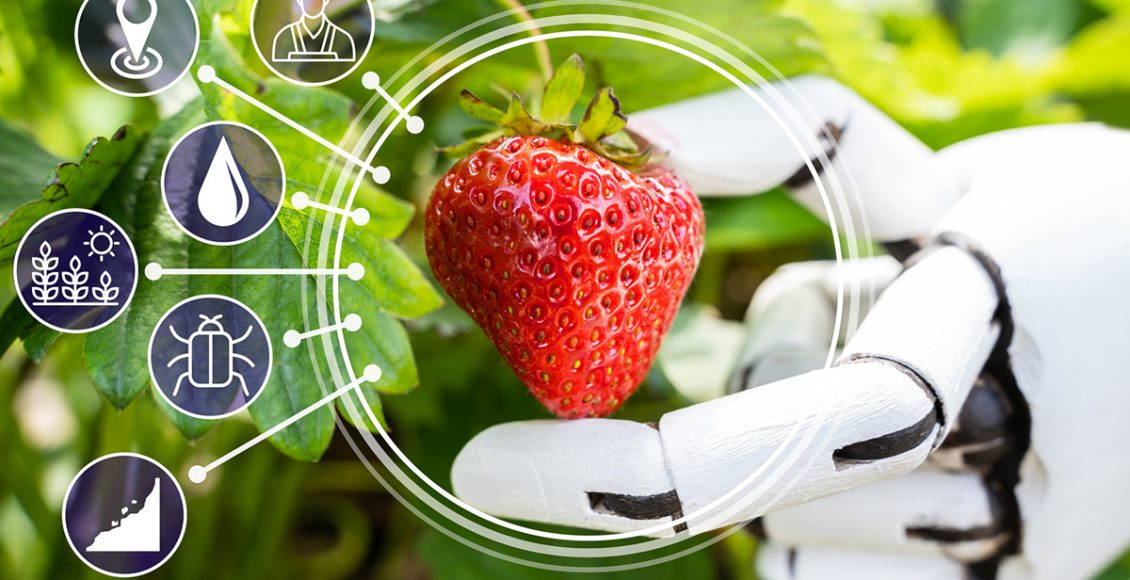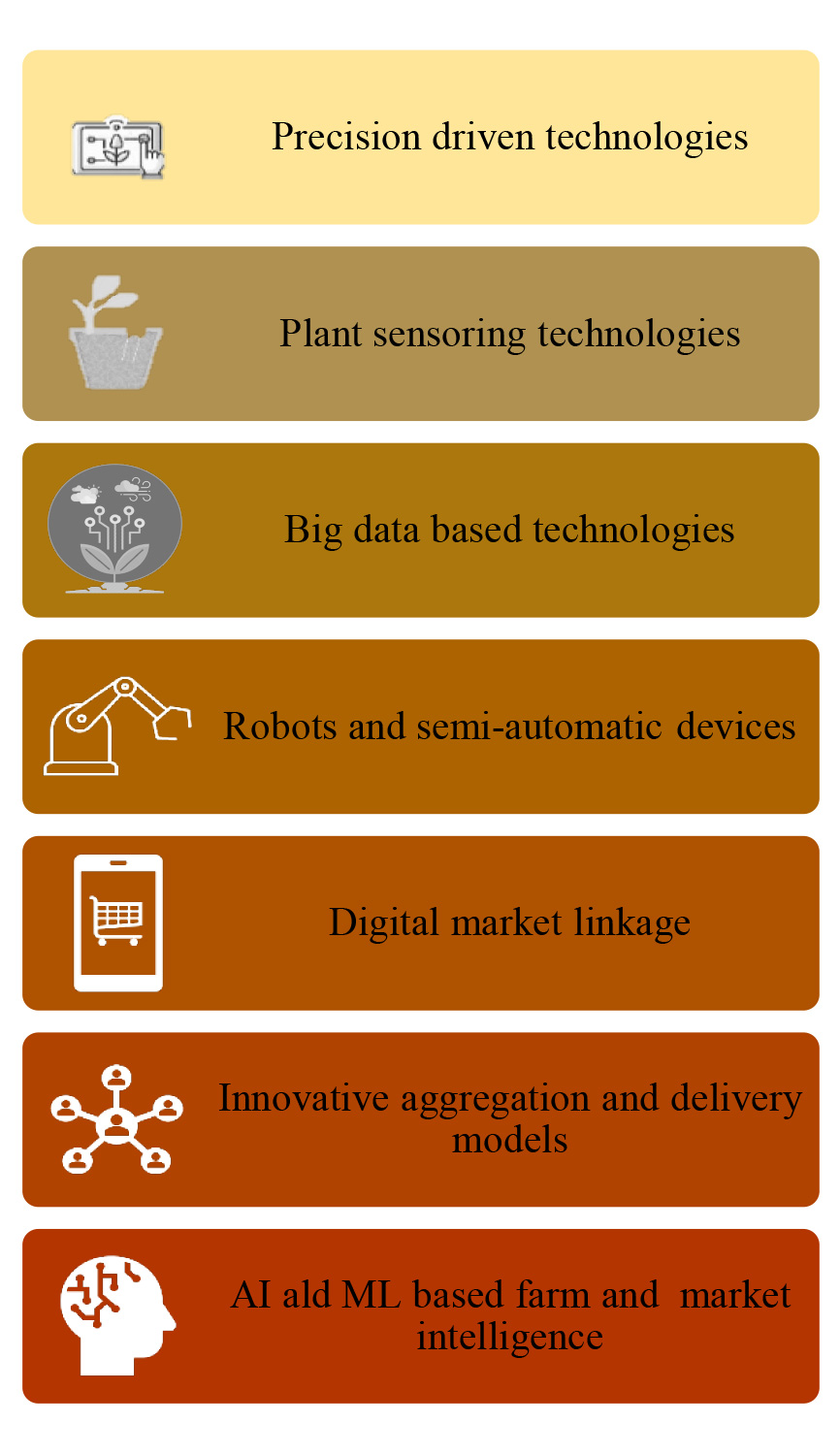
Agtech Innovations Holds Promise to Drive Transformation in Horticulture Sector
Horticulture is vital to improving crop productivity, guaranteeing nutritional security, and sustaining livelihoods. It contributes 33% of India’s agriculture Gross Value Added (GVA), occupying only about 20% of the total cropped area in the country. The horticulture sector offers an average yield of 12.3 tons/ha compared to 2.4 tons/ha in agriculture. The diverse sector with the potential for increased revenue realization per unit area is critical for enhancing farmer incomes and overall national economic output. However, unlike agriculture, horticulture demands higher input costs and labor-intensive operations. This is coupled with inadequate infrastructure facilities; the lack of proper cold chain facilities affects the successful transportation and storage of horticultural produce. The industry bears post-harvest losses of approximately USD 500 million per year, with more than 30-35% of the output wasted due to an inefficient supply chain.
The industry has witnessed a significant surge in production from 146 million tons in 2001-02 to 333 million tons in 2021-22. Integration of a diverse range of technology-enabled opportunities is one of the critical factors responsible for triggering the growth. Today, numerous agtech startups are gearing up to revive the ecosystem with game-changing technological innovations. Several companies are now integrating elements of precision, predictability, traceability, and direct market connect into farming activities through the introduction of promising technologies like the Internet of Things (IoT), Artificial Intelligence (AI), Machine Learning (ML), Big Data, Block Chain, etc.
 Well-directed and synchronized efforts in the horticulture sector toward achieving climate-neutral cultivation will pave the path for accelerating sustainability and building resilience. Technology-enabled greenhouses with a wide array of sensors, drones, AI-driven data, and dashboards are shifting cultivation from descriptive to prescriptive practices. In addition to attaining precision, such models help reduce labor intensively, improve nutrient absorption efficiency, manage pests and diseases better, and address seasonality issues and crop failure risks. Precision-driven technologies enable farmers to receive real-time alerts and advisory on-farm conditions, weather, soil conditions, and pest and disease predictions. GPS-based precision driven applications are used for field preparation and mapping, soil sampling, harvest scouting, and yield mapping. Next generation sensor technologies like digital phenotyping and imaging technology have the potential to assess how the plant is responding to the environment in which it is grown and analyze critical phenotypic data. Spectral sensing technology by Osram is one such example that enables real-time monitoring of total illumination at the plants to manage adaptive lighting requirements for growth while accounting for sunlight effects in greenhouses. Robots and semi-automatic devices help better manage tedious, time-consuming, and repetitive tasks as well as health and security issues. Robots help in soil analysis, phenotyping, weed control, harvesting, picking, sorting, packing, environmental monitoring, etc.
Well-directed and synchronized efforts in the horticulture sector toward achieving climate-neutral cultivation will pave the path for accelerating sustainability and building resilience. Technology-enabled greenhouses with a wide array of sensors, drones, AI-driven data, and dashboards are shifting cultivation from descriptive to prescriptive practices. In addition to attaining precision, such models help reduce labor intensively, improve nutrient absorption efficiency, manage pests and diseases better, and address seasonality issues and crop failure risks. Precision-driven technologies enable farmers to receive real-time alerts and advisory on-farm conditions, weather, soil conditions, and pest and disease predictions. GPS-based precision driven applications are used for field preparation and mapping, soil sampling, harvest scouting, and yield mapping. Next generation sensor technologies like digital phenotyping and imaging technology have the potential to assess how the plant is responding to the environment in which it is grown and analyze critical phenotypic data. Spectral sensing technology by Osram is one such example that enables real-time monitoring of total illumination at the plants to manage adaptive lighting requirements for growth while accounting for sunlight effects in greenhouses. Robots and semi-automatic devices help better manage tedious, time-consuming, and repetitive tasks as well as health and security issues. Robots help in soil analysis, phenotyping, weed control, harvesting, picking, sorting, packing, environmental monitoring, etc.
Fully Automated and Heavy-Lift Payload Drones by US companies like American Robotics, UAV Systems International are gaining popularity globally as aerial imaging and seed planting solutions. Low-flying drones of Taranis (Israeli company) can capture ultra-high-resolution leaf-level imagery and thus enable informed decision making. In India agriculture robots are manufactured by companies like Hari Agro Industries, Robo Technos, Binary Robotics, and Nadaf Agro Industries. Mechanical harvesting, imagery-based sorting, and grading based on various phenotypic characters are a few noteworthy examples. Companies like Precision Hawk are making drones to assess soil fertility for efficient fertilizer application and reduce wastage. Irrigation management solutions from Hortau enables real-time detection of plant stress, which helps reduce water and energy usage, facilitating optimal crop growth and reducing environmental impact.
Big data-based technologies offer grower-specific intelligent solutions, enabling yield prediction, efficient supply chain management, and forecasting farmer incomes. Digital data recording helps farmers manage inventory, follow standard guidelines, and supply export-quality products with requisite traceability data. Communicable quality assessment and digital market linkage facilitate real-time and broader buyer-supplier linkages, prevent quality deterioration and post-harvest losses, and thereby better price realization for the producer. Supply chain innovations like micro cold storage and packhouses, solar-powered micro-cold rooms, and solar drying technologies are revolutionizing the value chain. With innovative aggregation and delivery models’ startups are transforming and disrupting value chains by direct sourcing, bypassing market yards, aggregating near consumption zones, and selling superior quality products directly to consumers ensuring transparent pricing and timely deliveries.
Further, the sudden onset of the pandemic brought in the much needed paradigm shift in the sector by empowering the adoption of innovative technologies to ascertain the quality of produce and digitally access broader markets. The key to the modernization of the horticulture sector is technology-led progression. Studies indicate that high-end technology-empowered horticulture farming has potential to improve produce yield by 5-8 times and save 50% water and 25% fertilizer consumption. With the industry moving in the right direction to augment growth and achieve sustainability, the next steps should include devising long- and short-term plans for scaling up such interventions. Integrating such technologies demands upgrading the skills of value chain stakeholders for effective operations and data-driven decision-making, which must be addressed strategically. As the priority sector for driving international trade, horticulture should be provided with the requisite impetus for accelerated and streamlined adoption of such a wide array of innovative solutions.
Author:

Connect with Authors at: E-mail agribusiness@sathguru.com
 Grow Beyond
Grow Beyond 

